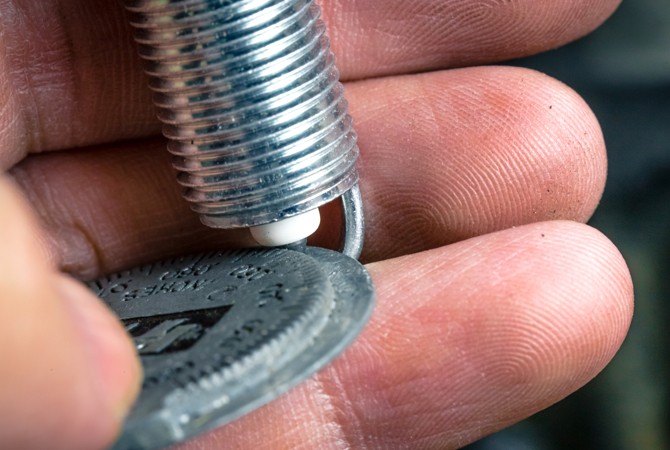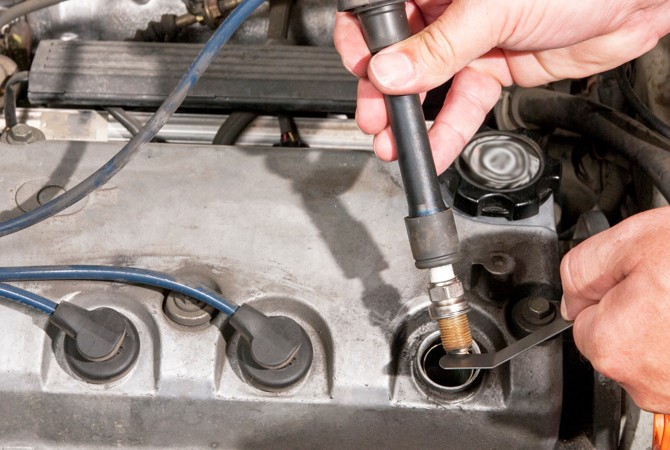Importance of the Spark Plug Gap
When replacing spark plugs, ensuring that the plugs have the proper gap is critical to engine performance. The gap is the distance between the center and side electrodes, set so arcing occurs at the proper voltage that ignites the fuel and generates the combustion that makes the engine run.
Do Spark Plugs Always Have to Be Gapped?
Not always. In the past, it was necessary to gap spark plugs, but today spark plugs are usually pre-gapped. It is advisable to double check that the gap is correctly set to the vehicle's recommended setting when installing spark plugs.
Finding the Proper Gap Setting

The gap setting is different for each vehicle but most are somewhere between 0.028" and .060". Consult the owner's manual or Champion® catalog to find the recommended setting for the vehicle you're working on.
How Do I Gap a Spark Plug?

Step 1
Locate a gap gauge or feeler gauge.
Step 2
Clean the spark plug. If it is new, this shouldn't be an issue; however, if you are checking a spark plug that is currently in the vehicle, it might be dirty on the contact points. Never use abrasive materials to clean a spark plug.
Step 3
Measure the existing gap of the spark plug. Using your gap gauge or feeler gauge, run the tool through the electrodes to determine the measurement. Take note of the measurement and compare it to the recommended setting listed in the owner's manual.
Step 4
Make any needed adjustments. Select the correct measurement on your gap gauge or feeler gauge. If you can’t get the correct feeler gauge through the gap, the gap needs to be widened. If the tool runs through the gap without touching the electrodes, the gap is too big and must be narrowed.
Use your spark plug gap tool to adjust the gap. Gently bend the ground electrode in to narrow the gap or bend it out to widen it.
Be very careful when making adjustments. Don't bend the electrode more than a few fractions of an inch. It is durable but isn't designed to take a lot of pressure. Also, take care not to hit the center electrode. If you snap off the bottom electrode or damage the center electrode from excessively prying on it, you'll need a new spark plug. Precious metal iridium or platinum center electrodes can be very delicate when it comes to prying them. It is important to use the proper spark plug gapping tool.
Step 5
Check the gap again. Repeat the adjustment process until the tool fits closely between the electrodes.
Consequences of Incorrect Spark Plug Gap

If the spark plug gap is incorrectly set, it can lead to engine issues. The customer may experience loss of power, misfires, spark plug fouling, increased plug wear, or poor gas mileage. Too small of a gap may give too weak of a spark to complete the combustion process within the engine; too wide of a gap can lead to the spark plug not firing correctly, causing misfires at high speeds.
Learn more about quality spark plugs, find your car part, or find where to buy your auto part today.
The content contained in this article is for informational purposes only and should not be used in lieu of seeking professional advice from a certified technician or mechanic. We encourage you to consult with a certified technician or mechanic if you have specific questions or concerns relating to any of the topics covered herein. Under no circumstances will we be liable for any loss or damage caused by your reliance on any content.
Related Parts
Champion® offers a wide variety of products for all your automotive needs.
Check them out!